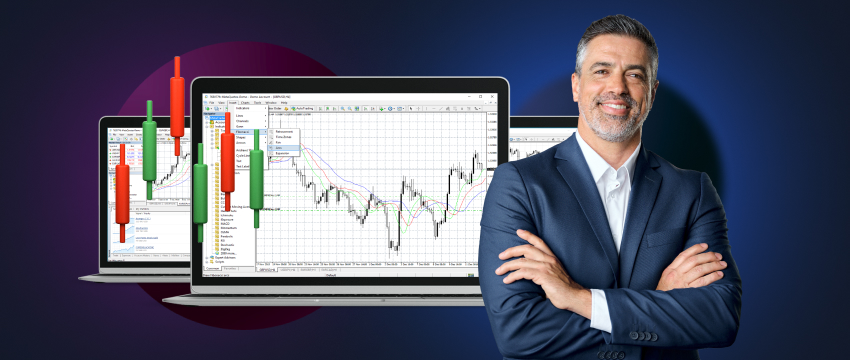Negociação diária e swing trading are somewhat similar trading styles that focus on achieving profits through short to mid-term trading. They are so similar, in fact, that in certain situations, they become indistinguishable from one another. Still, in most cases, there are differences.
And when there are multiple choices, traders, of course, want to know which one is better. After all, everyone would be happy to switch to a trading style that yields more gains than their current one. The bad news is that it doesn’t work that way.
As all traders know, trading is a highly nuanced process and one thing is rarely simply better than another. Even horrible choices, like dumping your life savings into a stock you believe in, can work one in a thousand times.
Things get even less clear when, instead of considering these edge cases, you start pondering real trading strategies. The real answer is that neither day trading nor swing trading is better. It all depends on the market situation and the qualities and preferences of the trader.
However, that answer is neither gratifying nor helpful. In this article, we present and inspect day trading and swing trading to help determine which trader may benefit more from each.

Negociação diária
Day trading isn’t really a singular strategy traders can point to. Instead, it’s a group of multiple trading tactics that involve opening and closing a trade within a single day.
As you can most likely guess, there are multiple methods of doing so. Let’s look at some of the most common ones to gain a better understanding of what day trading can encompass.
O scalping
The most famous (or perhaps infamous) short-term investing strategy is scalping. It’s so well-known, in fact, that people often think of it as a separate strategy entirely.
Scalpers place a large number of transactions only looking for marginal profits on each. In their approach, they are much more quantity based rather than considering quality.
Scalping requires focus, tight spreads, high liquidity, and low latency. On top of that, it also requires a lot of physical execution. Traders need good reflexes to react to slight market movements and open and close their trades at the exact right pip.
It also requires good multitasking skills, as you’re tracking multiple assets at once, and often have multiple positions open. Tracking all of this at once is highly mentally straining, so scalping definitely isn’t for everyone.
Good scalpers, however, can profit in any market condition, since their tactic doesn’t revolve around the state of the market, but rather around numbers.
Additionally, it doesn’t require a lot of trading knowledge. A disciplined scalper with strict entry and exit rules is pretty much ready to go.
Momentum trading
Momentum traders capitalise on market excitement or fear as they ride these waves until they are exhausted.
It’s a relatively simple tactic, traders find a trending or declining asset and buy in the former case or sell in the latter. Once the wave shows signs of reversal, they exit the position.
This tactic works somewhat similarly to scalping since there’s a lot of market movement tracking involved.
However, the big difference is that momentum traders need to keep a close eye on financial news and be diligent about spotting trend reversals.
Breakout trading
Breakout trading is very similar to the previous tactic, although it relies on prediction, and is perhaps a bit more advanced because of it.
Instead of spotting trends, breakout traders try to trade around key support/resistance levels to predict them.
As such, they are much more reliant on technical analysis than following market news.
By the time news have been released, the markets will have already started moving, making it too late for breakout traders.
This style of trading requires firm trading knowledge, particularly in technical analysis, and the ability to place that into a macroeconomic context.

Reversal/Mean reversion trading
This style of trading is perhaps the most similar to swing trading. In essence, reversal traders try to profit from market corrections. They track extreme swings and bank on them reversing direction afterwards.
This is a contrarian approach at its core, and as such, can be very risky. These strategies employ various indicators, like RSI, to provide some extra security to the positions they take.
Regardless of the indicator, mean reversion traders need firm knowledge of the tendencies of the asset they are trading to achieve long-term success.
Na negociação de swing
After that lengthy description of some of the most prominent day trading strategies, it’s time to investigate swing investing.
Swing trading is much simpler to understand because it’s not segmented into multiple different tactics. Swing traders buy an asset when they believe the price is about to change in the other direction.
From this description, it may sound identical to the reversal trading day tactic discussed previously. And the basic idea is, in fact, the same. However, the time orientation makes for a significant difference between the two strategies.
Because they are looking to profit over a period of multiple days, swing traders rely much less on momentary movements. Instead of prioritising technical measures, they are much more involved in fundamental analysis.
Swing traders want to know why the asset moved and what the surrounding market conditions are. In essence, it’s a much more big-picture approach.
On the other hand, swing trading isn’t the same as investing either. Traders still look to capitalise on temporary trends rather than dump their money and forget about it for a while to accrue value.
Momentum, reversals, and breakouts remain important for swing traders, as their positions usually remain open for less than a week.

Conclusion – Which is better for you?
Choosing the right trading style
There are many considerations when choosing your trading style. None are more important than trying the strategy you’re eyeing out and seeing if it fits you.
For instance, scalping sounds attractive to many newer traders. Learning trading can be burdensome, and many try to circumvent that by utilising this execution-based strategy.
However, it’s not foolproof. Even if traders manage to wrap their heads around the execution, it’s still very straining.
As such, many traders end up completely burnt out after a month, and leave trading altogether.
Likewise, many swing traders attempt to take their positions based on sound knowledge, only to find that it isn’t fast-paced enough.
They put in a lot of effort and their positions don’t yield immediate results, or worse yet, they have a string of bad predictions and get demoralised.
Testing and finding your fit with T4Trade
Finding your balance takes trial and error; sometimes what you choose can surprise even yourself. A demo account on T4Trade is a great way to test out all of these tactics without the risk of your own finances suffering.
For traders who end up liking a more steady approach, swing trading may be the best fit. For traders who really want to push their potential, place trades every day, and really min-max their performance, scalping may be the best tactic.
And for people who are stuck somewhere in the middle, reversal trading may have the best of both worlds.
Trading is highly individual, and traders who try to find the objectively best tactic will end up floundering and bouncing from one strategy to another. Only those who take the time to find their own preferences will gain confidence in the strategy they choose.
AVISO LEGAL: A informação disposta não deve ser interpretada como consultoria financeira ou recomendação de investimento, sendo apresentada apenas para fins de comunicação e marketing.




